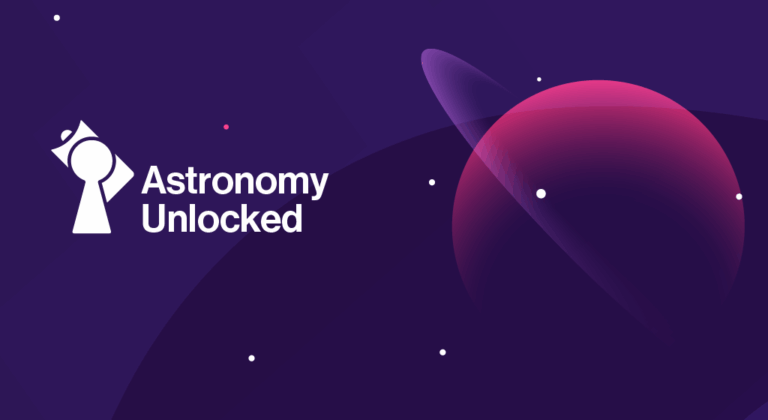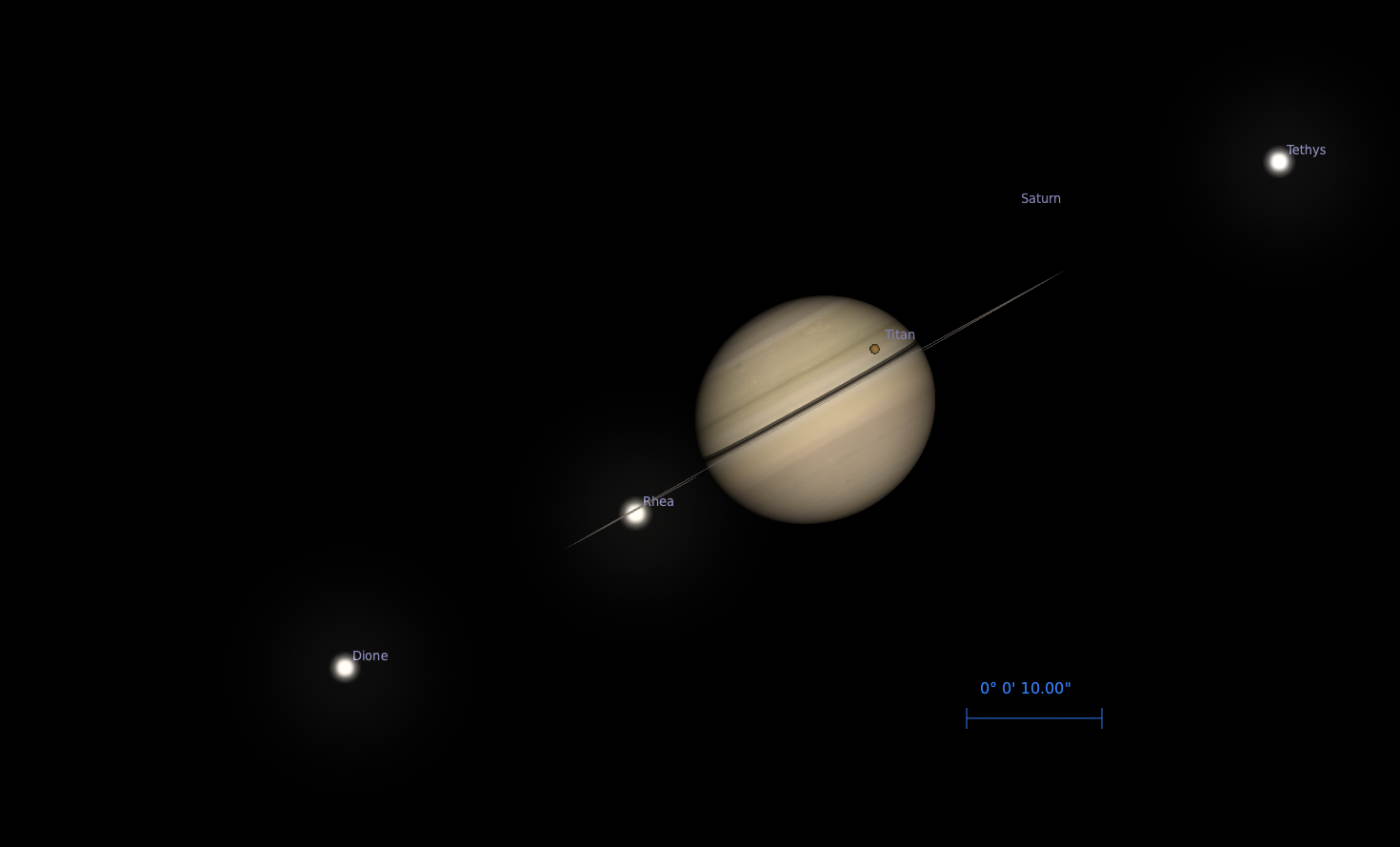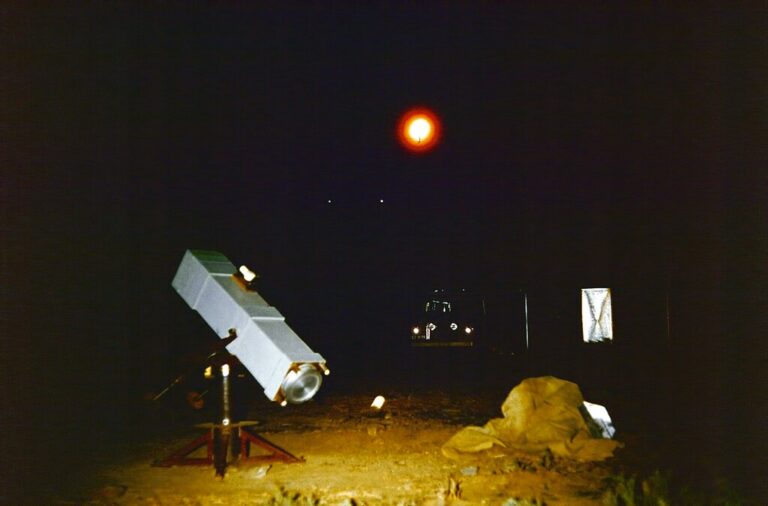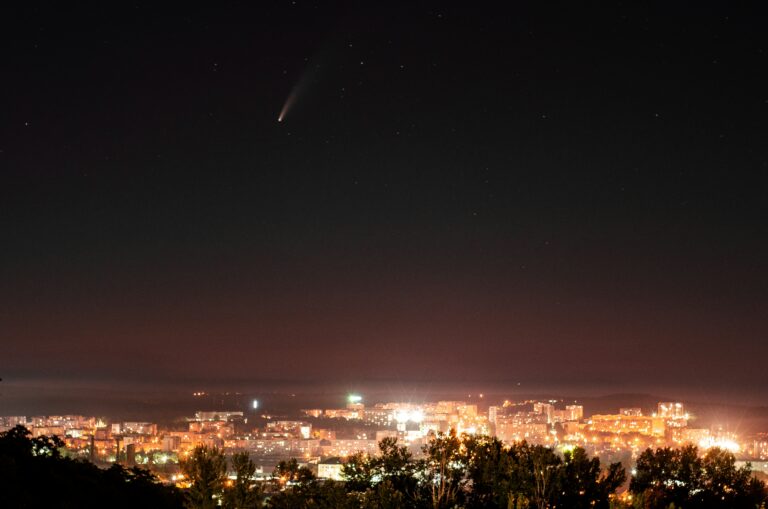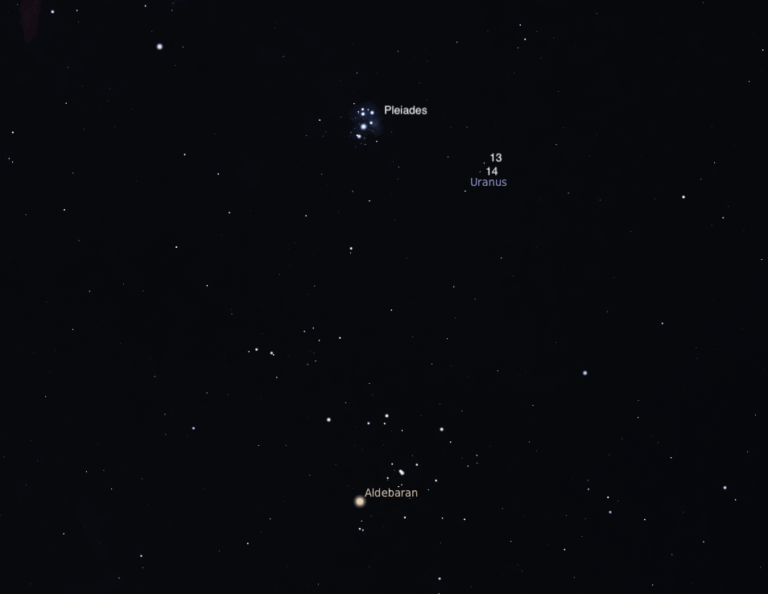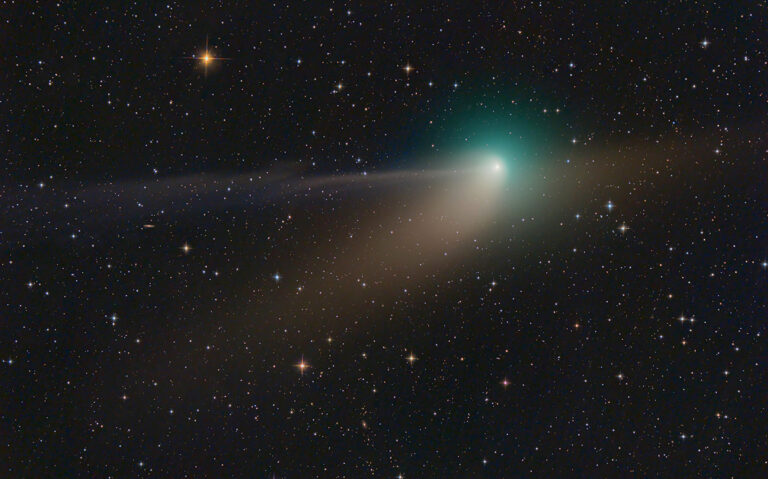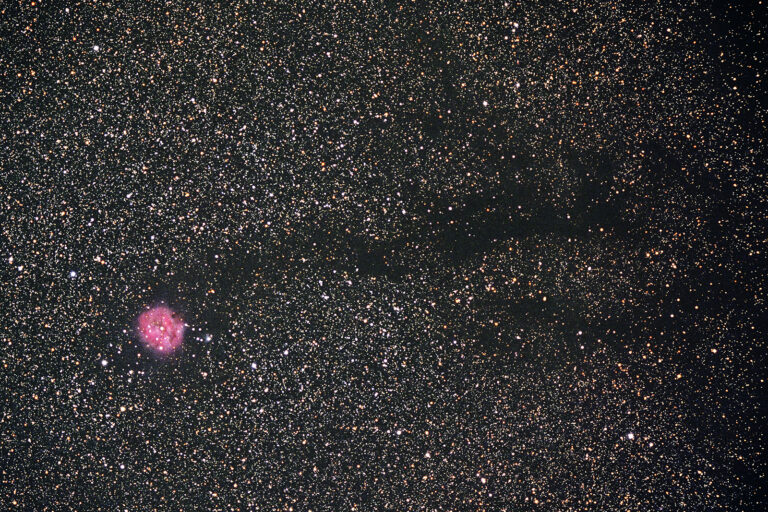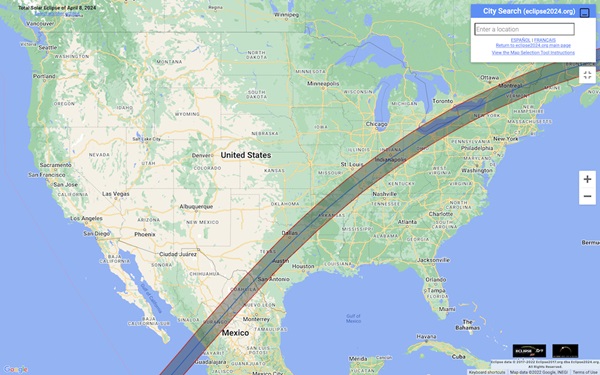
Key Takeaways:
- Dan McGlaun developed an online Eclipse Simulator for the 2024 total solar eclipse, providing accurate previews from various North American locations, including detailed visualizations of phenomena like Baily's beads and the corona.
- The simulator, based on calculations from established astronomical experts and McGlaun's own methods, offers customizable foregrounds, full-sky views, and time manipulation features, allowing users to simulate the eclipse at any moment and adjust the speed.
- The website www.eclipse2024.org hosts the simulator, along with informational resources for over 140,000 cities, covering the 2023 and 2024 eclipses, and includes translated content in French, Spanish, and Portuguese.
- Beyond the simulator, the project encompasses a collection of over 10,000 YouTube videos showcasing simulated eclipses from diverse locations, and plans for future enhancements include incorporating weather effects and ambient sounds.
(Editor’s note: This article was first published in 2023 and has been updated.)
The Aug. 21, 2017, total solar eclipse that swept across the U.S. revealed a need for a great deal of astronomy education for the general public. The lower 48 states had not seen solar totality since 1979, and people everywhere were clamoring for information on where they needed to be to see totality, what causes eclipses, and how to watch one safely. And, in retrospect, the astronomy community generally delivered fantastically well on all these accounts.
Dan McGlaun, a veteran of 14 total solar eclipses, participated in that effort by operating the site www.eclipse2017.org, which (with over 200 million hits) successfully provided education and outreach for the 2017 total eclipse. For the 2023 and 2024 eclipses, he created www.eclipse2024.org to host information on the events.
Meet the Simulator
A major part of McGlaun’s effort is his Eclipse Simulator, online software that shows an accurate preview of the 2024 total solar eclipse from any location in North America. For those looking to pick the best location to view the event, the program simulates the eclipse and its duration. For educators, it helps teach about features seen during totality. And researchers might even want to use it to plot the Sun’s position, edge effects along the path of totality, and the movement of Baily’s beads.

Unlike other simulators, McGlaun’s shows full-sky views, including foregrounds a user can customize, an overview shadow map, and accurate sky darkening. Users can also zoom in to see Baily’s beads (created with data from NASA’s Lunar Reconnaissance Orbiter and custom calculations), examples of prominences, the chromosphere, the diamond ring, and several sample coronas. Time sliders and a clock feature allow the user to run the eclipse in simulated real, compressed, or accelerated time.
McGlaun performed all eclipse calculations himself using elements calculated by American eclipse expert Fred Espenak and standard methods taught by Belgian astronomer Jean Meeus, among others. He devised his own methods for making line-of-sight calculations for the appearance of Baily’s beads from any given location. One of the only things he didn’t do was program the software — he works with developers to implement his calculations and techniques.
Following the 2017 eclipse, McGlaun created a database of 140,000 cities, offering general information for the 2023 and 2024 eclipses for all of them on a page rendered for each location. At first, he developed and placed small animations of the eclipse on each city page, then realized it also would be interesting to show the edge effects that eclipse chasers are so fond of. So, he developed the processes that enable the simulator to show the diamond rings, Baily’s beads, the corona, and the chromosphere, making the closeup animations more complete.
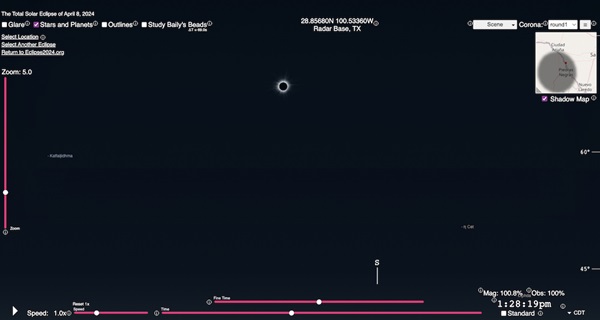
More is better
Once the basic simulator was complete, McGlaun knew he had something that could be of real value for both first-time eclipse viewers and veteran chasers, either of which might want to know how the eclipse will look from a given location. So, he began a two-year effort to add even more features like umbral darkening, variable coronas, statistically placed prominences, planets and stars, sunrise and sunset effects, and the ability to zoom in and out. He also added the option to show the eclipse at any moment and to change the rate at which time elapses.
By then, the simulator could show eclipses from over 140,000 cities. Additionally, it incorporated variable foregrounds, solar and lunar outlines, glare, a feature to allow closer study of Baily’s beads, and an eye safety warning that disappears when totality begins and reappears when it ends. He also added a map that shows an overview of the Moon’s shadow and pops up whenever the eclipse magnitude is greater than 98 percent.
With a full-fledged working simulator, McGlaun was determined to offer it as a “go-to” tool for anyone from casual observers to eclipse enthusiasts. He developed a complete set of instructions and worked with translators to translate the site into French, Spanish, and Portuguese. He also developed a process to add additional eclipses, to ensure the tool stays relevant into the future.
Currently, the Eclipse Simulator is a highlight of the www.eclipse2024.org site, but there’s more. McGlaun has extracted videos from the simulator and, with the help of video editors, composers, artists, and his talented developers, created more than 10,000 YouTube videos showing eclipses from various locations. You can watch the eclipse any time!
As of this writing, the simulator contains the April 20, 2023, hybrid solar eclipse that will pass over Western Australia and Indonesia, the Oct. 14, 2023, annular eclipse that will cross North and South America, and the April 8, 2024, U.S. total solar eclipse. And in the future, the simulated views might be even more intricate: McGlaun has been asked to add weather, crowd noise, the sounds of birds and insects, and even the possibility of controlling a user-connected USB fan to simulate the temperature drop that takes place during totality. Stay tuned!
Try it for yourself
“What we’ve achieved isn’t perfect, but I believe it’s the best simulator out there,” McGlaun says. “It’s fun to show people who’ve never seen an eclipse the difference between a 98-percent-partial and a total eclipse — and then tell them they’ll have to see the real thing to get the full effect.”
Developing the Eclipse Simulator has been a long and difficult effort, but those who have seen it agree that it’s been worth it. Perhaps the coolest feature is that McGlaun is able to offer it to everyone free of charge. Be sure to check it out at www.eclipse2024.org.

